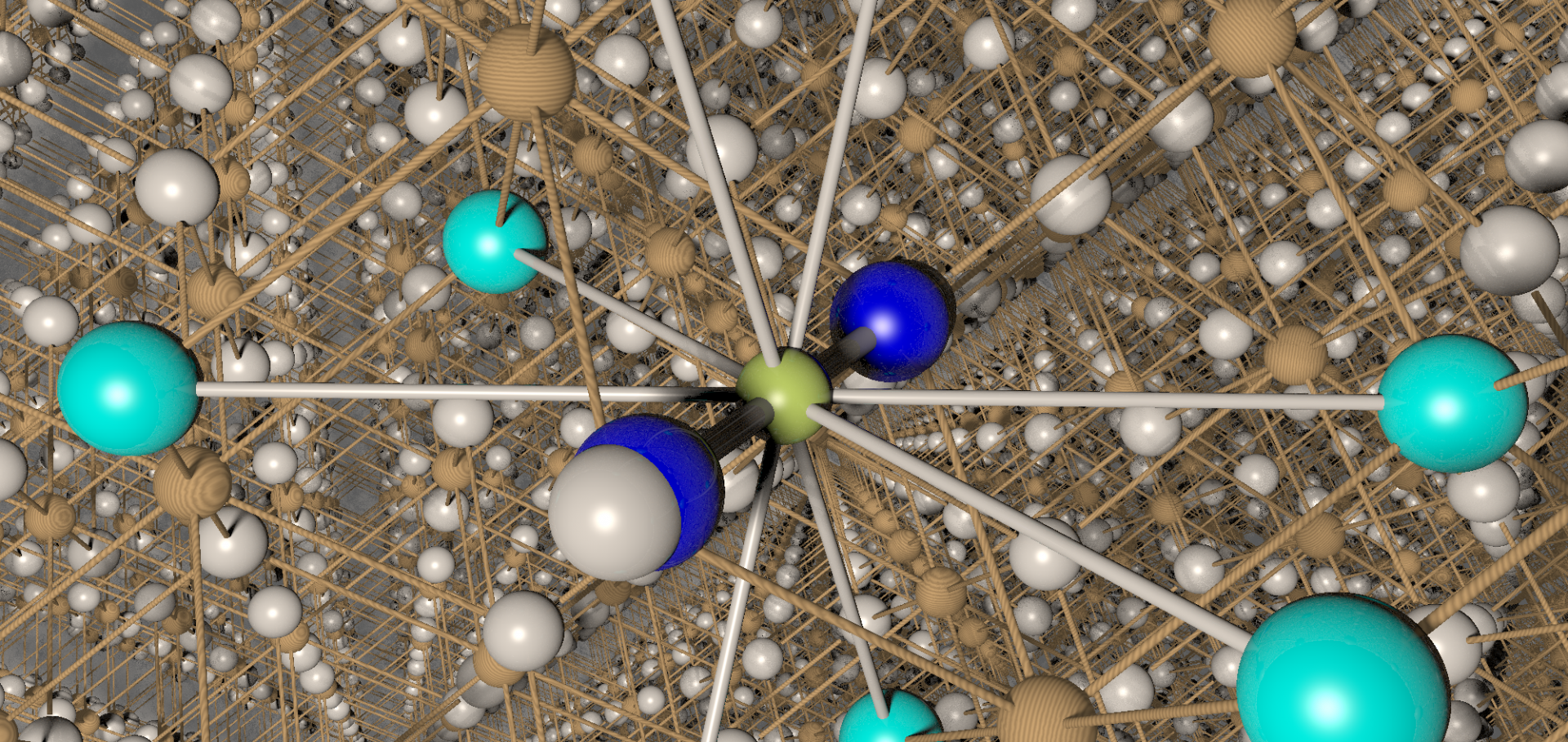Magnetic ordering in some organic molecular magnets
SYNTHETIC MET 71:1-3 (1995) 1827-1828
Abstract:
In order to study correlation between magnetic ordering and crystal structures of organic molecular magnets, zero-field muon spin rotation (mu SR), electron spin resonance (ESR) and a.c. susceptibility of the organic neutral radicals, 3-quinolyl nitronyl nitroxide (3-QNNN) and p-pyridyl nitronyl nitroxide (p-PYNN), were investigated. The onset of magnetic ordering is indicated at 0.21 K for 3-QNNN and 0.11 K for p-PYNN in the mu SR measurements as well as the a.c. susceptibility results. The magnetic structures are discussed in terms of canted ferromagnetic spin structures on the basis of molecular arrangements in the crystals. Preferred spin directions with respect to the molecular orientations of the radicals in the crystals are discussed.Spin-orientation dependence in neutron reflection from a single magnetic film.
Phys Rev B Condens Matter 51:14 (1995) 9395-9398
mu SR studies of magnetism in the organic systems p-NPNN and 3-QNNN.
SYNTHETIC MET 71:1-3 (1995) 1823-1824
Abstract:
Recently, ferromagnetism has been observed in a family of organic molecular crystals based on the nitronyl nitroxide radical group. We report zero-field mu SR measurements on compressed powder samples of the organic magnets p-NPNN and 3-QNNN which have been used to directly probe the temperature dependence of the spontaneous field and the relaxation rate in each system. In p-NPNN, we observe a temperature dependence of the spontaneous field which is very similar to that seen in an aligned single crystal experiment and yield the same Curie temperature (T-c=670 mK). However, the oscillations in the measured signal are very strongly damped, particularly so just below the transition temperature. In 3-QNNN, the oscillations indicate a lower spontaneous field and a smaller Curie temperature (T-c=210 mK).μSR studies of magnetism in the organic systems p-NPNN and 3-QNNN
Synthetic Metals 71:1-3 (1995) 1823-1824
Abstract:
Recently, ferromagnetism has been observed in a family of organic molecular crystals based on the nitronyl nitroxide radical group. We report zero-field μSR measurements on compressed powder samples of the organic magnets p-NPNN and 3-QNNN which have been used to directly probe the temperature dependence of the spontaneous field and the relaxation rate in each system. In p-NPNN, we observe a temperature dependence of the spontaneous field which is very similar to that seen in an aligned single crystal experiment and yield the same Curie temperature (TC = 670 mK). However, the oscillations in the measured signal are very strongly damped, particularly so just below the transition temperature. In 3-QNNN, the oscillations indicate a lower spontaneous field and a smaller Curie temperature (TC = 210 mK). © 1995.Angle-dependent magnetoresistance oscillations and Fermi surface reordering at high magnetic fields in α-(ET)2KHg(SCN)4
Synthetic Metals 70:1-3 (1995) 825-826


